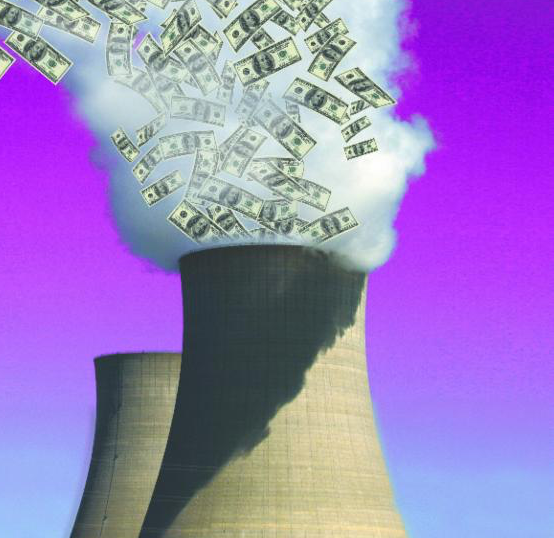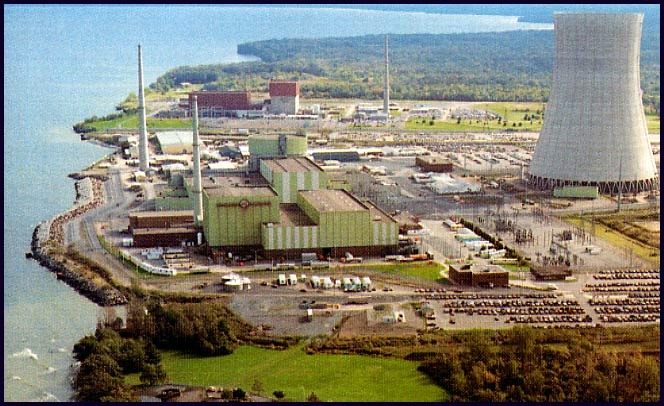Pilgrim nuclear power station permanently shuts down
 US NRC photoAs of May 31, 2019, the nation’s operating nuclear power fleet will drop to 97 units with the permanent closure of the Pilgrim nuclear power station in Plymouth, MA. The Pilgrim closure further reduced the number of General Electric Mark I boiling water reactors operating in the US to 20 units. The four reactor units at Japan’s Fukushima Daiichi power station destroyed by multiple hydrogen explosions and reactor core meltdowns following the earthquake and tsunami of March 11, 2011 were all the same GE design and construction.
US NRC photoAs of May 31, 2019, the nation’s operating nuclear power fleet will drop to 97 units with the permanent closure of the Pilgrim nuclear power station in Plymouth, MA. The Pilgrim closure further reduced the number of General Electric Mark I boiling water reactors operating in the US to 20 units. The four reactor units at Japan’s Fukushima Daiichi power station destroyed by multiple hydrogen explosions and reactor core meltdowns following the earthquake and tsunami of March 11, 2011 were all the same GE design and construction.
Congratulations to Pilgrim Watch, Cape Downwinders and the many others who have struggled over decades to end the threat of a Pilgrim nuclear accident and stop the generation of more nuclear waste that is still without envrionmental justice and a scientifically accepted long-term management plan.
The vigilance of public interest and environmental groups watchdogging the nuclear industry and its captured federal regulators will need to remain on guard as the operative atomic threat from Pilgrim now shifts from the danger of a reactor meltdown to a storage pond sitting atop the reactor building densely packed with super-hot irradiated nuclear fuel. There, the high-level radioactive waste will need to thermally cool in the storage pool before the assemblies are loaded---shielded underwater---into storage canisters, sealed, drained and filled with pressurized helium gas essential to passive cooling into the future. Each loaded cask weighing well over a hundred tons will then be moved from the pool and lowered by crane down a six-story equipment shaft in the reactor building and towed to an onsite area for indefinite storage. This is the first major step in a decommissioning process as proposed to begin with the transfer of ownership from Entergy to a newly formed decommissioning contractor, Holtec International, that also manufactures the casks. The license transfer is being scrutinized by the Massachusetts Attorney General and Pilgrim Watch in a legal intervention before the Nuclear Regulatory Commission over Holtec’s financial accountability and the safety of its plan to significantly accelerate the decommissioning of the reactor for completion in eight years. Holtec would take title to the uncertain future of its hazardous nuclear waste storage casks. The NRC is still deliberating on its decision.
WBUR Boston prepared a timeline chronicling some of Pilgrim’s operating history. Of note, Pilgrim’s history is notorious for the cancer studies and findings its operation and radioactive releases prompted. The Massachusetts Department of Public Health's "Southeastern Massachusetts Public Health Study" (1990) looked at 22 towns around the nuke and correlated a four-fold increase in a rare adult leukemia in the population living most immediately within four miles of the atomic power plant, and who were exposed to increased radiation releases occurring between 1972-1974. Another study by Dr. Richard Clapp, then with the Massachusetts State Cancer Registry, found a two-fold increase in hemotopoietic (immune cells) cancer in communities immediately around Pilgrim from 1982-1984. These were just the cancers and sicknesses identified as attributable to atomic power by clinical study. Don't be fooled---radiation causes cancer. All atomic power stations release harmful radiation routinely and accidentally.





 May 29, 2019
May 29, 2019
